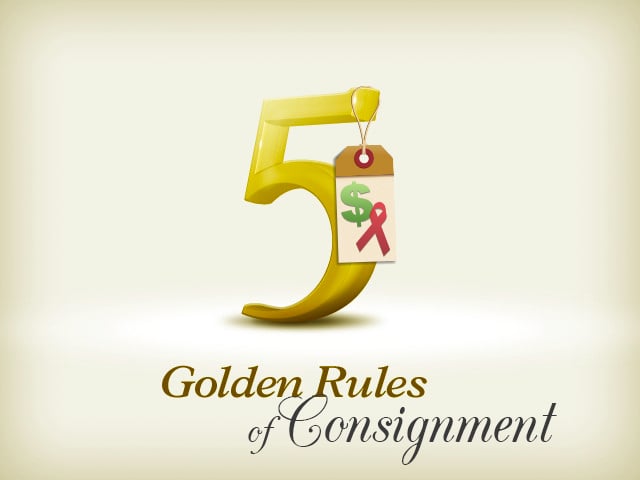
Successful Nonprofit auctions engage attendees and inspire fierce bidding. The amount of money that can potentially be raised is directly correlated to what is up for auction, and baskets and gift cards can only go so far – these types of items will quickly reach their max value and bidding will cease.
Plan and design your event to raise more money by keeping bidders interested with fewer high-value, attention-grabbing items.
The Roadblock: Big Visions, Limited Connections
“Wowing” the attendees is often easier said than done. There will be times when members of the procurement team will be able to get some big-ticket items, but too often the team doesn’t obtain what’s on their wish list. That’s why consignment is a smart option for ensuring a well-rounded auction with exciting items that can pull in higher bids.
The Solution: Consignment Auction Items
The consignment process enables Nonprofits to partner with an outside company who specializes in unique items, trip packages or Experiences – offering these auction items at no risk because the Nonprofit only pays for what actually sells.
Popular types of consignment items include event tickets, travel packages, sports memorabilia, art and even vehicles (motorcycles, cars, etc). Typically there is a set reserve price the Nonprofit must meet before the auction item can be awarded to a bidder. This ensures that the consignment company gets paid and money is raised for the organization’s mission.
How can you put consignment to work at your next auction event? Consider these Five Golden Rules for consigning Nonprofit auctions items.
1. Start early and advertise
Auction item procurement teams are always racing against the clock, especially as auction day approaches. Getting quality auction items quickly is critical, and by finding the right consignment items early on, you can relax knowing the big ticket items are secure. The auction committee can then work to fill in the holes with other quality auction items and focus on other essential event details.
Another benefit of starting early with consignment items is that it allows you to advertise the auction’s most unique items prior to the event date, which can help persuade people to attend and motivate them to bid.
2. Align items to audience interests
It’s not enough to simply have big-ticket items at a Nonprofit event – those items need to pique the interest of attendees, too. It’s critical to keep your audience in mind when deciding on which consignment items to secure.
For instance, guests of a Nonprofit athletic organization are likely to be more enthused by a number of sports experience packages, while patrons attending a high-end gala for an arts organization are more likely to bid on an art history package.
If you’re not sure which items will excite attendees, call some of your best donors and discuss what they would like to see on the auction block at the event. This insight can be invaluable.
{{cta(‘bc4b315d-659b-4f3f-b7ab-190318c1f75a’,’justifycenter’)}}
3. Capitalize on consignment travel
Travel opportunities are perhaps the most broadly appealing type of consignment item because everyone takes at least one vacation every year. By aligning your auction offering with donors who already have money budgeted for leisure travel, you are providing the perfect opportunity for them to fulfill two needs at once.
Donors who purchase a consignment travel package will enjoy a win-win outcome – taking an amazing trip and supporting a worthy cause in the process.
If you know key donors are considering travel to a particular destination, see if your consigment company offers a vacation package in that area. Targeting your donor’s interest in a particular item or Experience will boost bidding activity at the event. If it’s on their bucket list, they’re likely to bid on it!
4. Work with a reputable company
All consignment companies are not created equal. To ensure your Nonprofit gets the best items and a seamless winning bidder experience, it’s important to partner with a reputable organization. Seek consignment companies who have been in business for several years. Case studies or references should be available online or by request.
Always confirm that items can be consigned at no-risk, which means if the reserve isn’t met at auction, there’s no obligation to purchase the item. Review the variety of items that can be consigned by looking at their online catalog of items or Experiences. Read and understand all the details about a package, including Nonprofit cost, availability, blackout dates, restrictions and other fees. Reputable consigment companies will always present this information upfront and have it clearly listed on their website.
When in doubt, always ask questions!
5. Understand the fulfillment process
Strive to ensure a stellar winning bidder experience by understanding how a consignment company plans to transfer the item or Experience to the winner. For physical items, know the process and timeline for shipping. For travel packages, ask how the company will work with the winner to book accommodations and plan vacation details.
Understanding the process will enable you to answer any questions donors might have so they feel confident bidding during the event. Always follow up with the winners to ensure they are satisfied with their consignment prize and feel appreciated for their generous donation.
{{cta(‘0d771a74-45f8-4fa7-800e-0e6d53ecee96′,’justifycenter’)}}
